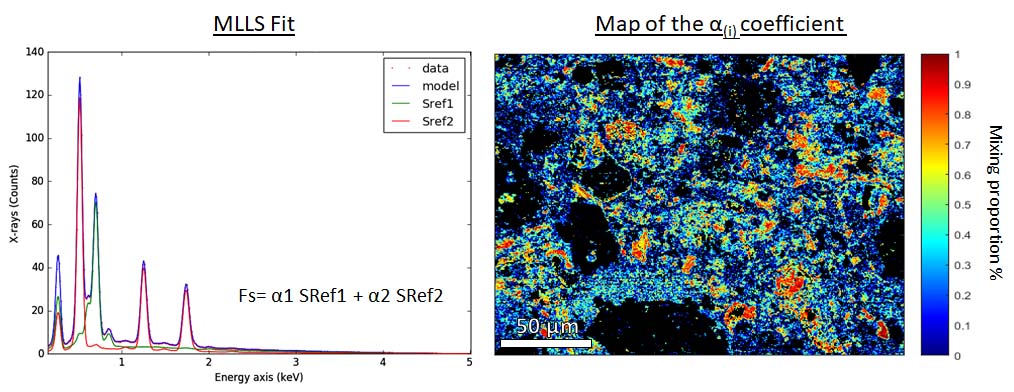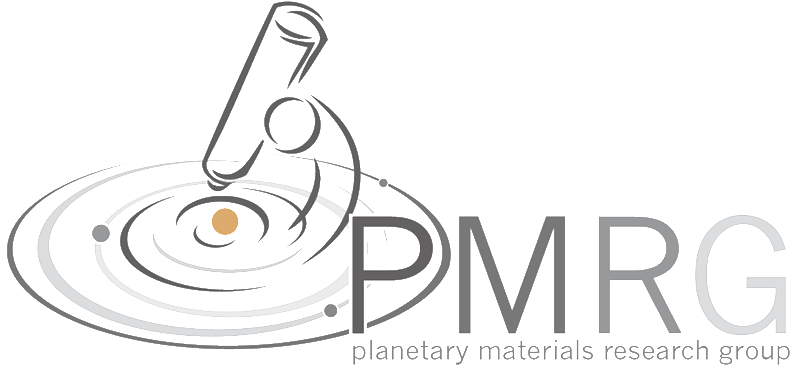In order to study the complex phase assemblages in meteorites and related planetary materials we also develop new analytical methodologies using a variety of techniques.
Nanophase mapping coupling low-voltage SEM and microprobe measurement
Carbonaceous chondrites are heterogeneous in terms of composition, density, and grain size from the micro to nanoscale. To better constrain the nature of these fine-grained materials, a new method coupling phase mapping in low-voltage SEM-EDS and quantification by electron microprobe can be used. The aim is to quantify simultaneously the composition and the abundance of sub-micrometer phases, determine the geometry of the grains, and obtain the global composition of the area analyzed at higher spatial resolution.

Fig 1. Left Graphical representation of the Mg and Si element maps combined with the intensity of Fe (colorbar). Each point corresponds to a pixel. Identical composition form clusters of pixels. Right Phase map of the matrix of the Paris meteorite. The pixel size is 250 nm.
At 6 keV in the SEM, a minimum spatial resolution of 250 nm is attained. The element maps obtained by EDS are analyzed by clustering (Fig. 1 right) to generate a phase map (Fig. 1, left). For pixels still showing a contribution of different phases, a linear combination fit (MLLS fitting) is performed to retrieve the mixing ratio of the different phases (Fig. 2). Once the phases are identified, the chemical compositions of the largest grains are obtained using the electron microprobe (point analyses). Then the global composition is calculated from the modal abundances, the density, and the composition of each phase.

Fig 2. Left Multiple reference spectra fitted to raw data. Each spectrum is adjusted using a coefficient. Right Map of the chrysotile coefficient. The colorbar indicate the proportion of this phase in each pixel.
From Zanetta, PM. et al (2019) Chemical geology, 514, 27-41


